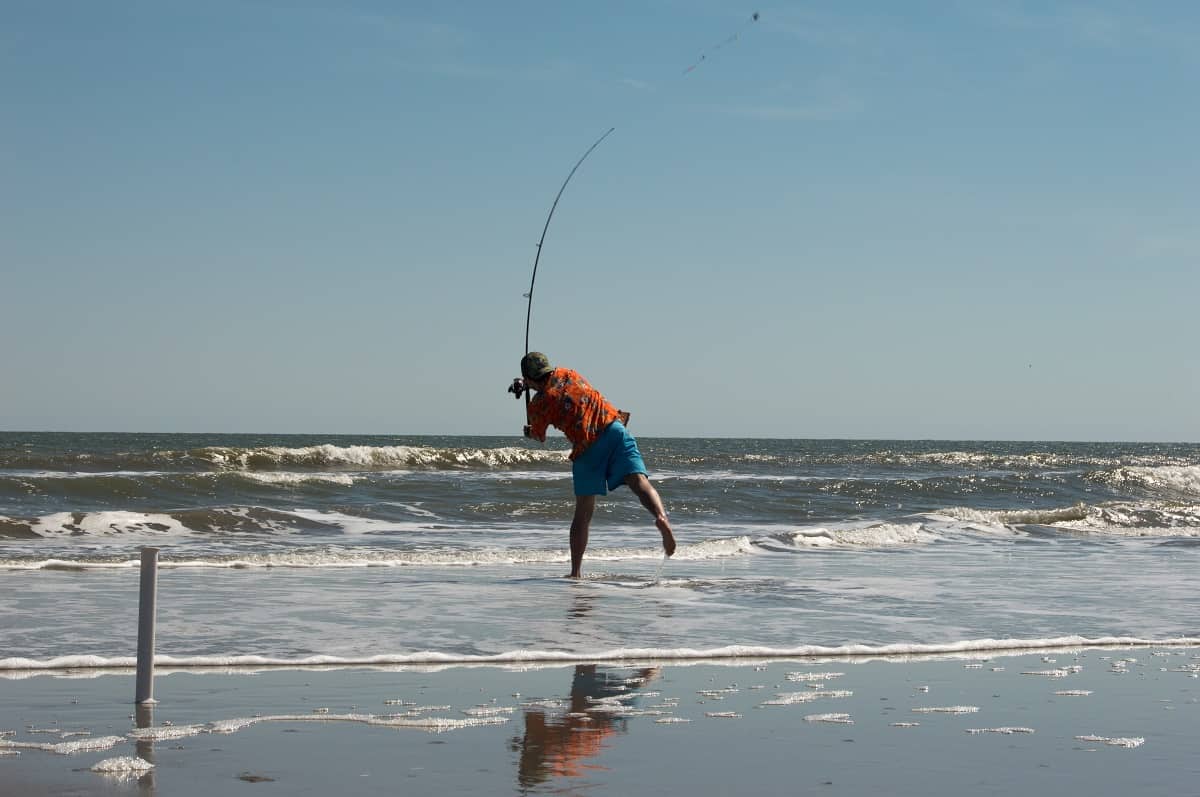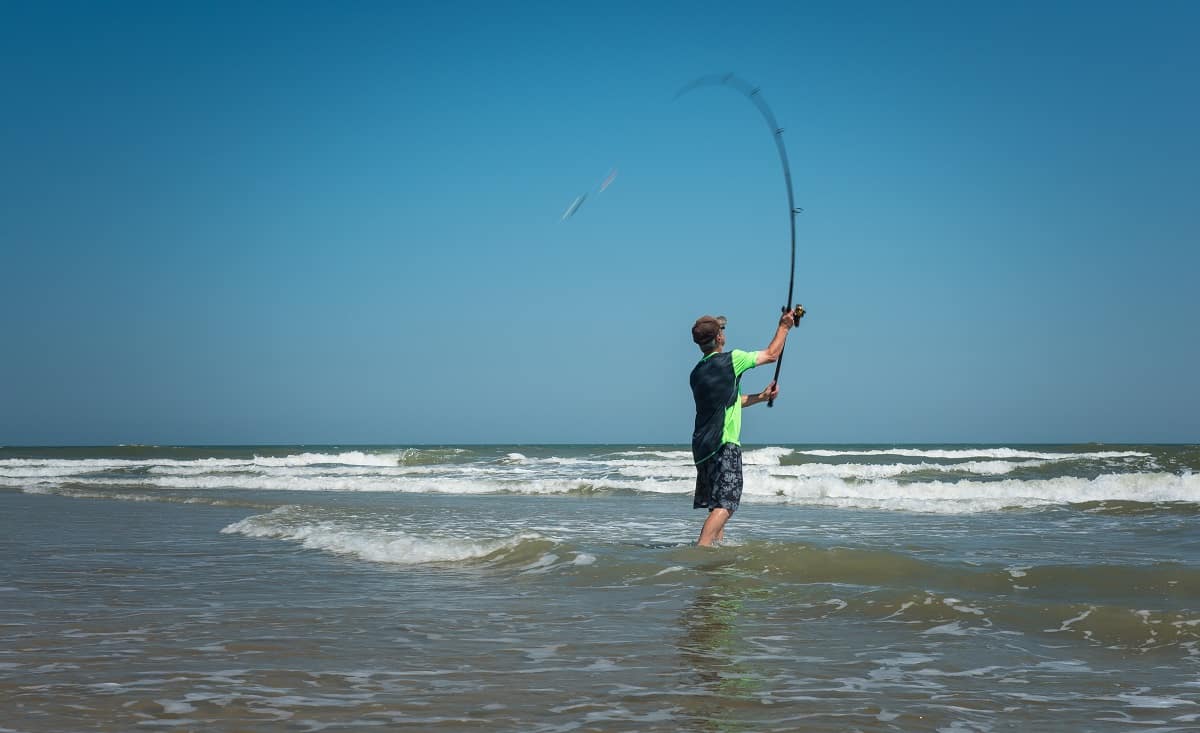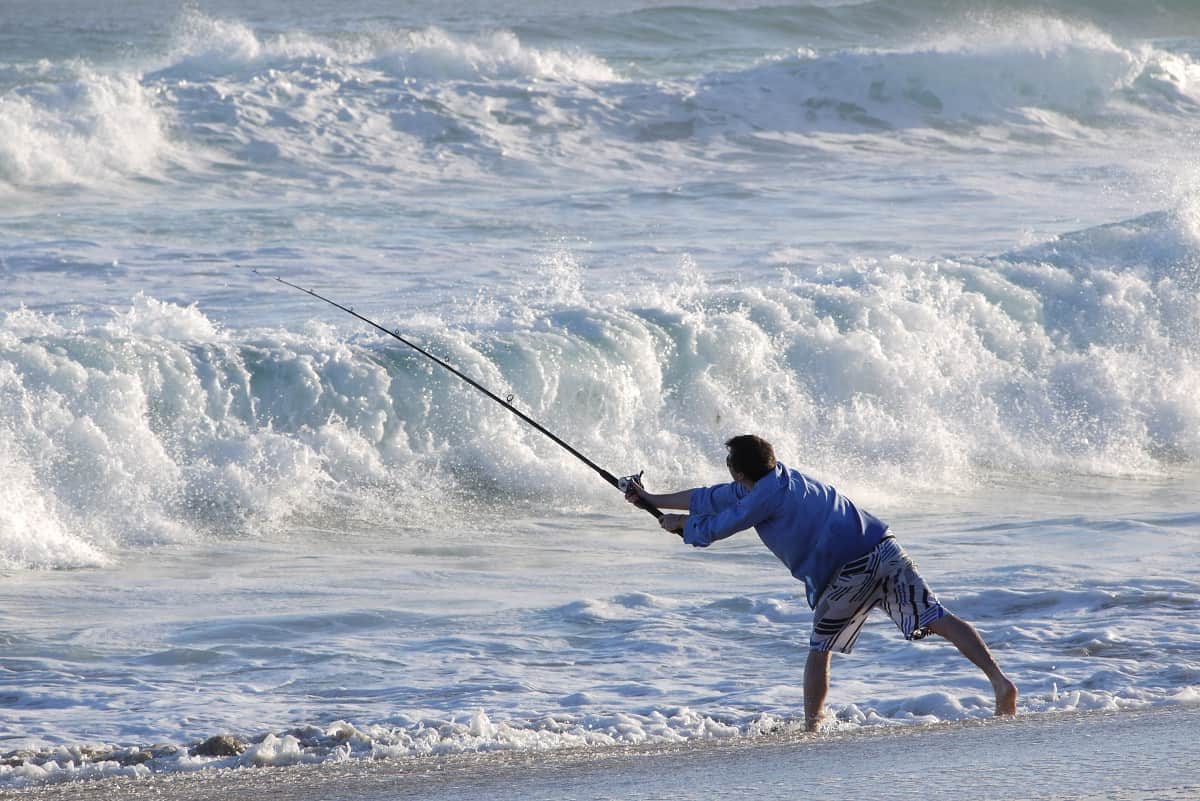
Surf Fishing Low Tide vs High Tide: Which Tide is Better?
Any fisherman worth his salt knows that tides matter a lot. You could have years of know-how, the best bait, the best tackle, and the perfect spot, but if you don’t know how the different tides affect the bites you’re after, you’ll be left wondering where you went wrong.
Don’t worry, though; we’re here to tackle this dilemma with you. The differences between high and low tides may seem arbitrary at first. But trust us when we say that they can significantly impact your success in surf-fishing. And quite possibly determine whether you go home empty-handed or with a sizable chunk of bites.
So, before you embark on your next fishing trip, take a gander at this article, and make sure you’re in the know as to what the different tides mean. In this article, you’ll learn all about tides and how best to approach each situation. We guarantee you that you and your fishing will only be better for it.
Low Tide Surf Fishing

Let’s make one thing clear, even before we get into the logistics of surf-fishing at low-tide: whenever possible, you should always go fishing at high tide as it will greatly improve your chances of catching a few bites. Low-tide surf-fishing is suboptimal, but not completely unable to produce any significant results. There’s just a whole lot more for you to consider and certain conditions that need to be met, which will take more time and energy than fishing at high-tide.
That being said, let’s take a look at low-tide fishing and how to go about it.
What You Need to Consider
For low-tide surf-fishing to be considered as productive in any sense, there are three conditions that need to be met. First, the water must still be moving; second, it must be around 2 feet deep at the submerged sandbars; and thirdly, the beach should not be busy or crowded.
Let’s discuss each of these conditions and why they’re important for you to consider.
The Water Should Be Moving
During the low tide’s most stagnant hour, it’s unlikely that you’ll catch any bites at all. This is because fish are conditioned to swim closer to shore when the water is moving due to essential nutrients being exposed. In other words, the fish will have no reason to swim any closer if the water is not in motion.
To avoid being left hanging, we’d suggest that you cast your line in the hour, either before or after the tide is at its lowest. These two hours are when the tide moves either up or down, but we’d further suggest that you opt for the after-hour, as the water level is more likely to increase than decrease.
Conveniently, this leads us to our second point.
The Water Should Be Deep
You should never cast your line if the water is shallow, as you’ll almost never catch a bite worth the bait. That’s because fish are conditioned to always seek out deeper waters in order to quickly and easily escape any predators or other dangers.
To avoid wasting your time on the small, two-inch baitfish that you might find in shallower waters, we’d suggest that you cast your line at the spots where the waves break against the seaward and shoreward sandbars. Here, the water is generally pretty muddy or colorful, which provides smaller fish with ample hiding spots, and larger fish with a place to surprise and trap the former.
More fish means more opportunities to catch a bite.
The Beach Should Be Quiet
Just like us, most fish will value self-preservation above all else. And when a beach is crowded or over-populated, it puts a fish’s survivability at risk.
You’re more likely to catch something if you cast your line on a quiet beach and if both of the previous conditions are also met. You’re also less likely to mistakenly injure or maim some hapless surfer or swimmer just trying to catch the tide.
In general, try to find yourself a nice, peaceful spot to cast your line, tides notwithstanding.
High-Tide Surf-Fishing
 Shop Related Products Ads by Amazon × Thank you!
Shop Related Products Ads by Amazon × Thank you!
This will help us improve your ad experience. We will try not to show you such ads again.
Report a problem
This item is…
Not relevant Inappropriate / Offensive Displayed poorly Other
Add Comments (Max 320 characters)
 Tailored Tackle Saltwater Surf Fishing Kit 82 Pc Tackl… $44.99 Bestseller (188)
Tailored Tackle Saltwater Surf Fishing Kit 82 Pc Tackl… $44.99 Bestseller (188) DEAL OF THE DAY ENDS IN × Thank you!
This will help us improve your ad experience. We will try not to show you such ads again.
Report a problem
This item is…
Not relevant Inappropriate / Offensive Displayed poorly Other
Add Comments (Max 320 characters)
 Piscifun Water-resistant Outdoor Tackle Bag Sin… $33.99 Bestseller (3261)
Piscifun Water-resistant Outdoor Tackle Bag Sin… $33.99 Bestseller (3261) DEAL OF THE DAY ENDS IN × Thank you!
This will help us improve your ad experience. We will try not to show you such ads again.
Report a problem
This item is…
Not relevant Inappropriate / Offensive Displayed poorly Other
Add Comments (Max 320 characters)
 PLUSINNO 16pcs Fishing Lure Spinnerbait Kit with … $14.99 Bestseller (1911)
PLUSINNO 16pcs Fishing Lure Spinnerbait Kit with … $14.99 Bestseller (1911) DEAL OF THE DAY ENDS IN × Thank you!
This will help us improve your ad experience. We will try not to show you such ads again.
Report a problem
This item is…
Not relevant Inappropriate / Offensive Displayed poorly Other
Add Comments (Max 320 characters)
 Piscifun Fishing Line Winder Spooler Machine Spinnin… $44.99$52.99 Bestseller (4282)
Piscifun Fishing Line Winder Spooler Machine Spinnin… $44.99$52.99 Bestseller (4282) DEAL OF THE DAY ENDS IN Ads by Amazon [tcb-script async=”” src=”//z-na.amazon-adsystem.com/widgets/onejs?MarketPlace=US&adInstanceId=051135e1-0152-44ce-b568-a514be59362e”][/tcb-script]
As we’ve already said, in general, high-tide surf-fishing is more ideal if you’re looking to catch more than a few bites. That’s not to say that you can simply cast your line and stand around waiting for the fish to come: quite the opposite. The same considerations you’ll need to make for low-tide surf-fishing still apply to high-tide, though they are met far easier.
The Water Should Still Be Moving
Even if the water is deep enough for most fish to have enough room for escape, they’re still not likely to approach if the water isn’t in motion. This is, again, due to the way fish are conditioned to behave. If the water isn’t moving, smaller fish can still remain relatively safe from predators because it’s easier for them to escape. This is a different story entirely when the water is in motion.
Also, stagnant waters will not agitate as many nutrients, so even smaller fish may not find it worth it to approach.
To ensure that you get the best results from your surf-fishing excursion, we suggest that you avoid fishing when the tide is at its peak, as this is also when the water stabilizes and thus grows still. As was the case with low-tide surf-fishing, cast your line an hour before or after the high-tide’s peak.
The Water Should Still Be Deep
This probably won’t be too much of a concern when high-tide surf-fishing, but just make sure only to cast your line if the water is 2 feet deep or higher.
The Beach (and Water) Should Still Be Quiet
Don’t cast your line if there are many surfers or swimmers in the area. The fish won’t approach. Rather, find yourself a quiet spot away from everybody else before looking for a bite.
Conclusion
Of course, we can’t control the tides, but we can choose when and where to cast our lines. Remember, though, that just because you go fishing at high-tide, it doesn’t guarantee that you’ll get any good bites; even so, we’ve just shown you that it’s still possible to catch something of note even at low-tide.
